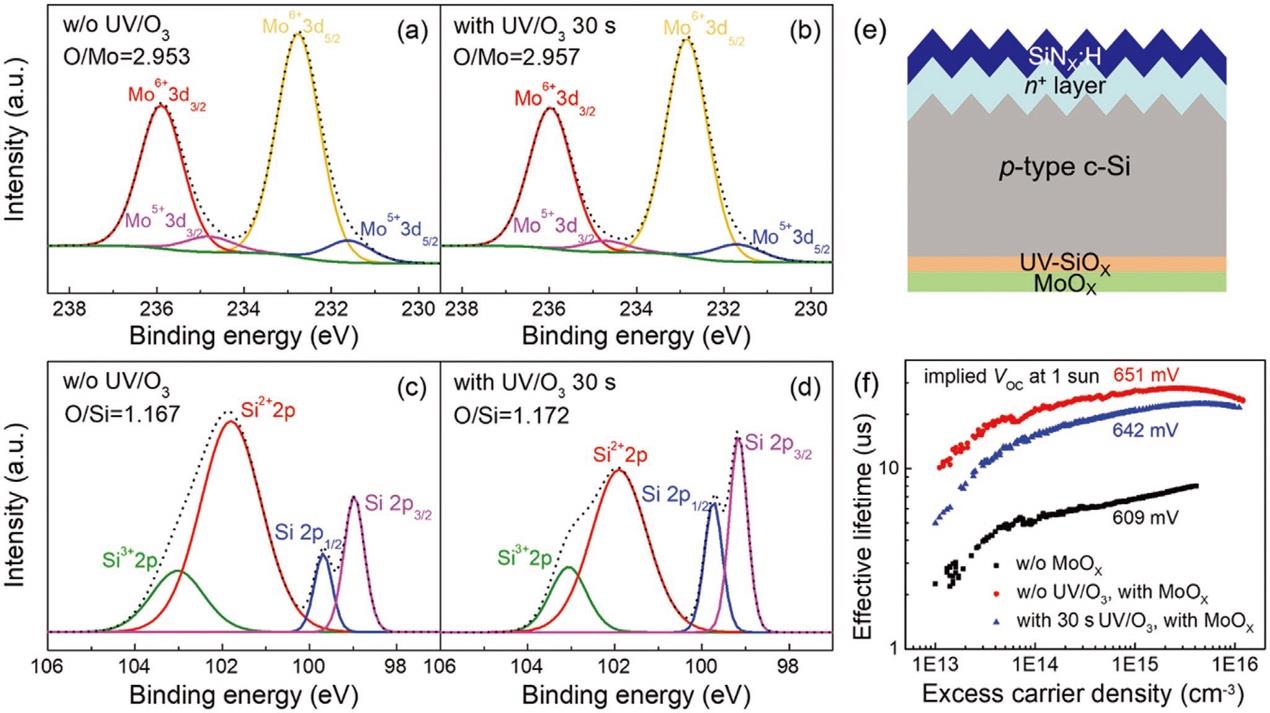Efficient separation and collection of photogenerated carriers through the formation of asymmetric electron and hole transport channels is one of the central issues for crystalline silicon (c-Si) solar cells and other types of photovoltaic devices. Silicon heterojunction solar cells based on MoOX (X<3) hole-selective contacts show significant advantages in carrier-selective transport, however, it faces the challenge for long-term stability due to poor thermodynamic stability of MoOX.
Motivated by such a challenge, a research team led by Prof. LI Dongdong at Shanghai Advanced Research Institute (SARI) of the Chinese Academy of Sciences collaborated with Jinneng Clean Energy Technology Limited reported a novel stacked structure (c-Si/SiOX/MoOX/V2OX/ITO/Ag) to improve the stability of c-Si solar cells. The research results were published in Advanced Functional Materials entitled “Stable MoOX‐Based Heterocontacts for p‐Type Crystalline Silicon Solar Cells Achieving 20% Efficiency”.
In this work, the research team introduced a SiO2 tunneling passivation layer at the MoOX/c-Si interface to suppress the redox reaction brought about by the direct contact between MoOX and c-Si, which keeps the work function of MoOX at a relatively high level. An ultra-thin V2OX layer is deposited on the surface of MoOX film to improve the stability of the heterojunction structure in air and its resistance to sputtering damage. At the same time, the ITO layer is fabricated at the V2OX/Ag interface, which effectively inhibits the migration of metal ion, and finally constructs a tandem structure of c-Si/SiOX/MoOX/V2OX/ITO/Ag, with power conversion efficiency (PCE) of 20.0% and significantly improved stability.
This work innovatively constructs a stacked thin film structure based on an in-depth understanding of the interfacial evolution of MoOX/c-Si and MoOX/metal electrodes, providing a new approach to the study of compound/c-Si passivated contact heterojunction solar cells, which can be extended as a universal method to improve the efficiency and stability of heterojunction solar cells and other types of optoelectronics.
This work was supported by the National Natural Science Foundation of China, the Natural Science Foundation of Shanghai, the Shanxi Science and Technology Department, and the Youthnnovation Promotion Association of the Chinese Academy of Sciences.

Figure 1. The device performances as a function of UV/O3 pre-treatment (Image adapted from Advanced Functional Materials)

Figure 2. Characterizations of XPS spectra and passivation properties of MoOX films (Image adapted from Advanced Functional Materials)
Contact: LI Dongdong
Shanghai Advanced ResearchInstitute, Chinese Academy of Sciences
Email:lidd@sari.ac.cn |
|
| | |
|
|